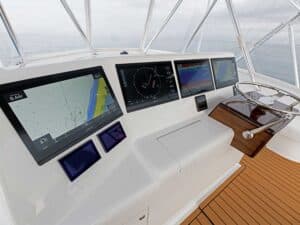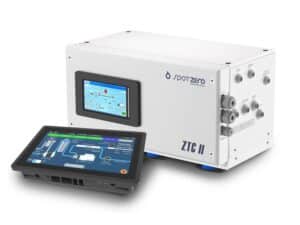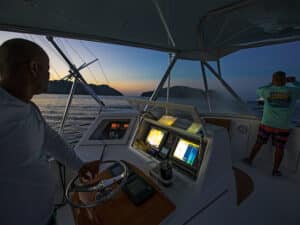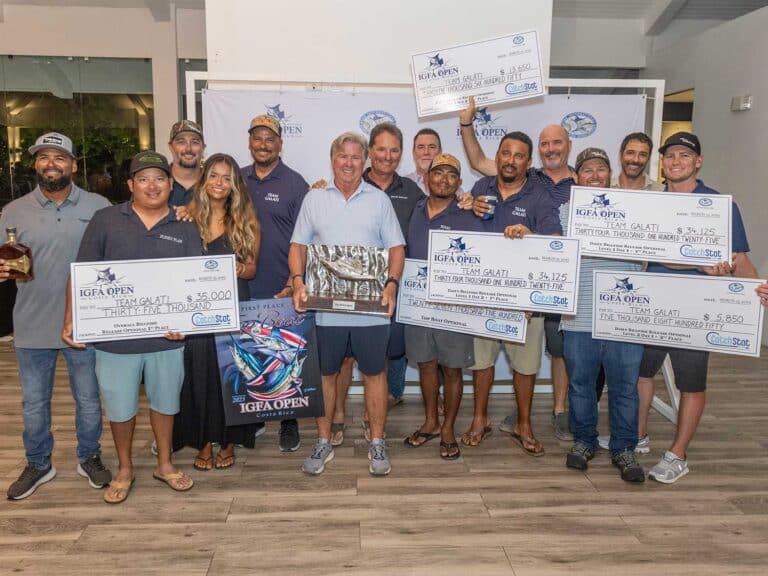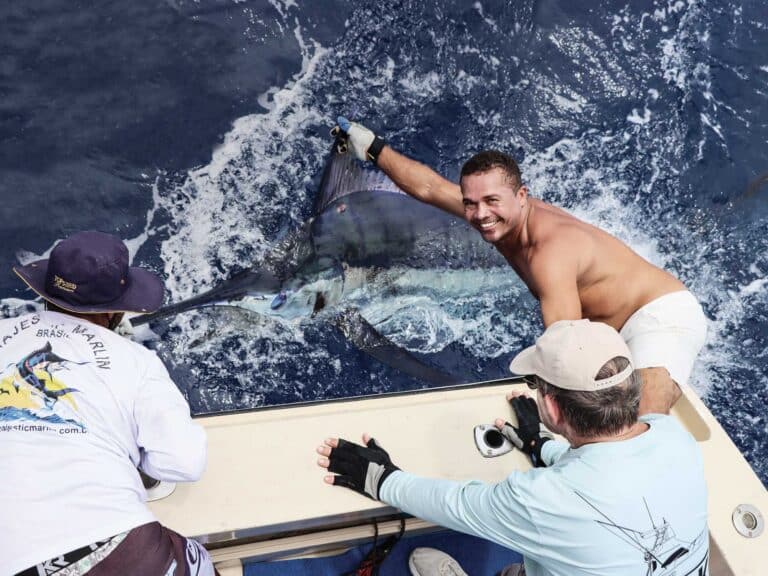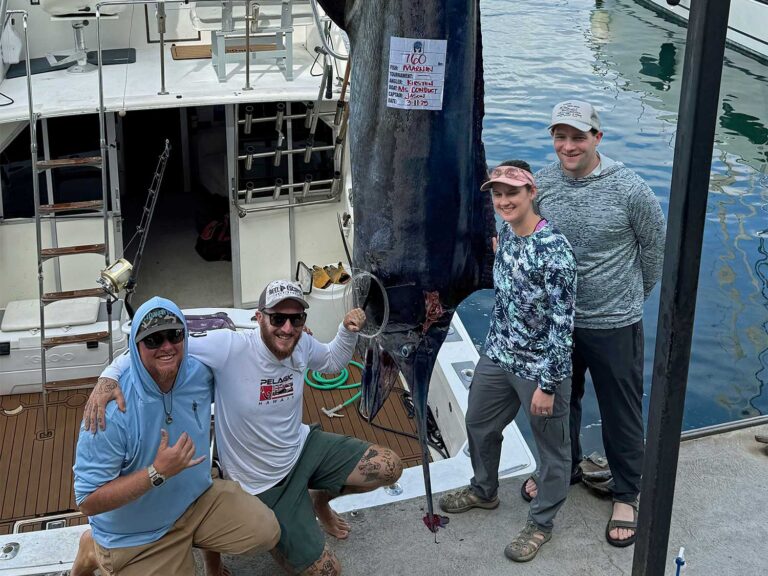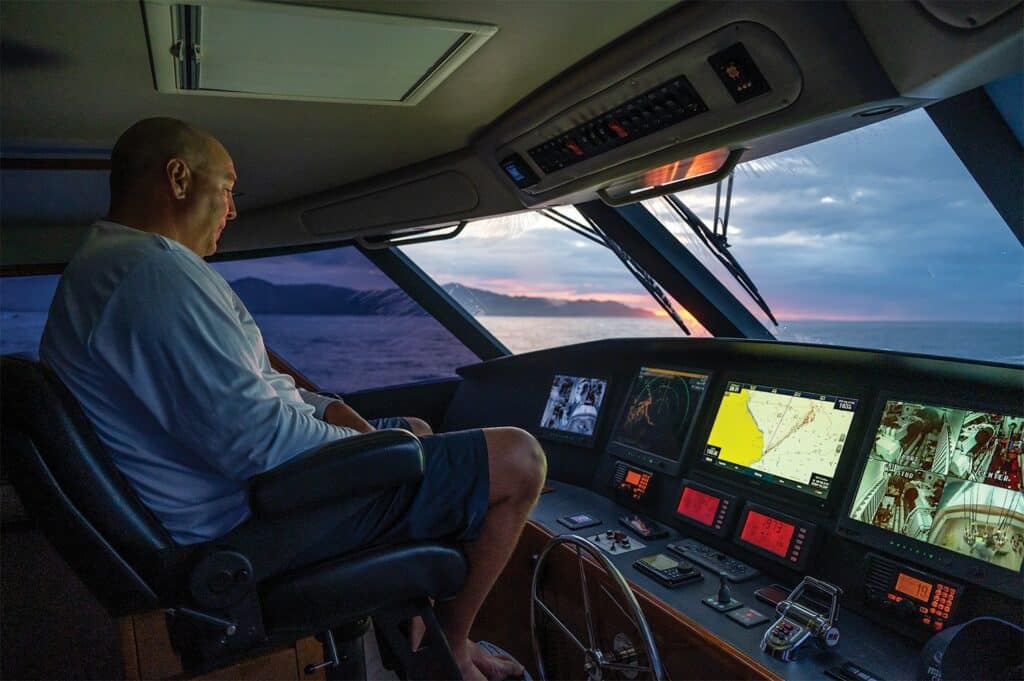
Special delivery: Sign up for the free Marlin email newsletter. Subscribe to Marlin magazine and get a year of highly collectible, keepsake editions – plus access to the digital edition and archives.
If there’s one thing about technology, it never takes a break. Much like in our everyday lives, we are the fortunate beneficiaries of so much technology in almost every aspect of boating and fishing today. From engine systems and boatbuilding composites to tackle and components, we are in an ever-evolving sphere of new products and information. Things move so quickly. It seems that once you adapt to one level of tech, before you can fully appreciate the benefits, the next level is looming on the market. At times I wonder if we have reached the plateau of enough information at our fingertips—when does it become too much? I guess when it keeps us from being aware of our surroundings and working safely in the environment, then it truly becomes information overload.
Learning to utilize what we need most and having a great familiarity with all our equipment is important. Knowing when to integrate different aspects of raw data with the environmental conditions we find ourselves in at that moment requires discipline and a thorough understanding of each piece of technology. The more time you have to hone your skills with each piece of gear individually, the more likely you are to have success when blending all that data.
There are no processors made that can take in various factors such as depth, surface temperature, current, wind, tide, boat speed over ground and on the surface, echo-sounder data, Omni sonar data, position, bait positions, teaser placement, sea conditions, and so many other factors that the human brain considers to make both long-term and split-second decisions. Let’s not forget about all the boat systems information happening concurrently—fuel usage, oil pressure, temperatures, bilge pumps, AC settings, watermaker, holding-tank levels, the list goes on and on—and all this information is continually being scanned and processed by the captain and crew to keep things going. However, obtaining the data and getting the information is where the electronics companies have excelled, providing more and more data in a faster, more accurate way to help us make good decisions.
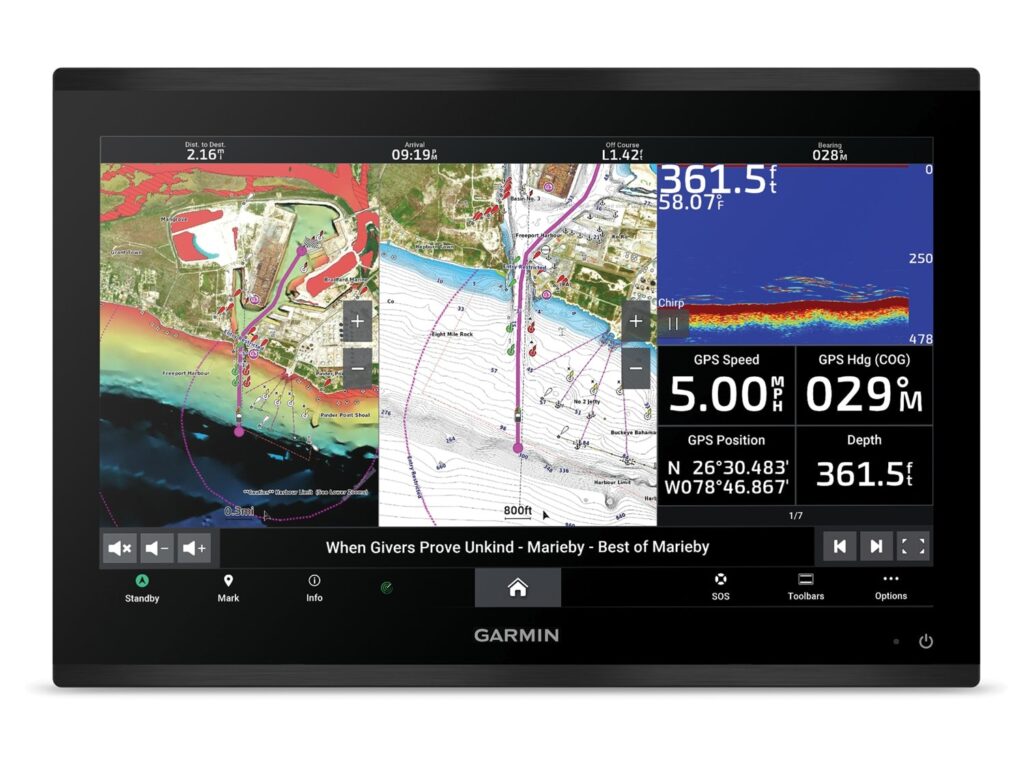
Garmin GPS9000 Series
The latest multifunction offerings from Garmin are loaded with features and advancements that ultimately benefit the end user in all manner of uses. Available in 19, 22, 24 or 27 inches, the touchscreen displays feature powerful 4K resolution with edge-to-edge viewing and incredible clarity. Powered by a processor with seven times more speed than the previous generation, the redraw, zoom, and switching functions are all super quick. Faster networking speeds throughout the vessel are achieved through Garmin’s BlueNet gigabit network with comprehensive connectivity.
The units can be flush- or flat-mounted, and offer excellent clarity in sunlight from any angle, even with polarized sunglasses. With the speedy processor, the map-drawing and Auto Guidance routing functions are faster than any previous versions, benefiting all other functions like sonar, radar, cameras, video and digital switching.
The units also integrate into existing Garmin marine systems, including other GPSMAP chart plotters, radars, sensors, and other NMEA 2000 and NMEA 0183 networks, while built-in Wi-Fi enables wireless software updates via the ActiveCaptain app through a smartphone or tablet. The GPS 9000 Series also integrates engine monitoring, vessel monitoring and control, Fusion audio and entertainment, Garmin’s Surround View Camera System (all connected to a Garmin smartwatch to control MFD functions), voice commands and more. These units still can’t rig your baits or clean the boat, but they darn sure have vessel system integration and situation awareness covered.
The industry continues to improve technology and its integration into our boats and equipment to the ultimate benefit of the end user. Knowing what you need from technology, how much integration you want, and how it helps your boating and fishing experience is a matter of personal preference. But there is no shortage of companies working to make those experiences even better.
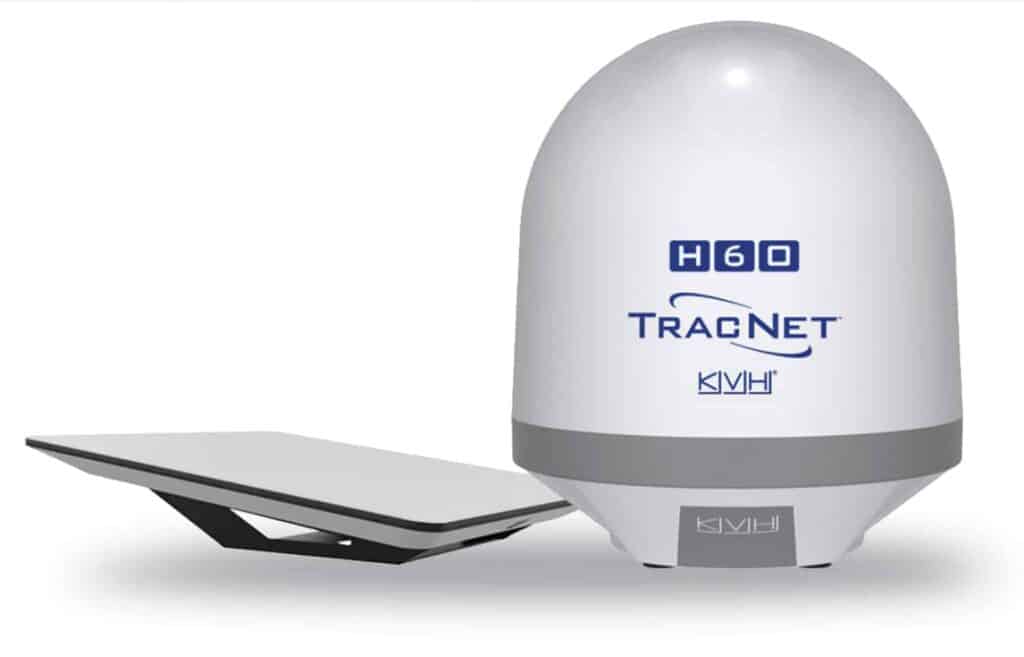
KVH Maritime Hybrid Communications with Starlink
One of the hottest technologies for marine applications is the Starlink satellite receiver equipment. Longtime satellite-antenna manufacturer KVH has added Starlink to its service portfolio as a companion service to its own KVH One global network as well as on its own as a standalone system. “Starlink is a valuable addition to our hybrid connectivity portfolio,” said Brent Bruun, KVH’s chief executive officer. “Our intelligent hybrid design enables us to switch seamlessly between Starlink and both the KVH TracNet and TracPhone terminals for outstanding and affordable communications. As a result, fleets and yachts worldwide will enjoy optimal, reliable connectivity together with KVH’s premier 24/7 support, business-critical applications and service-level commitments.” Using an electronically steered flat-panel antenna array, Starlink offers high-speed, low-latency internet, while KVH TracNet terminals feature satellite, cellular and Wi-Fi interconnectivity with automatic switching. With plug-and-play integration, there is seamless connectivity worldwide with the Starlink and KVH One network.
Raritan TankAssure
For years, the only true tank-level gauge that you could believe was the sight gauge, and that was only for fuel and water. One problem is that they were only ever found on custom boats, and rarely was there a gray tank or black-water tank gauge. There have been many attempts to electronically monitor tank levels, and over time, there seems to be a high failure rate in their operation and accuracy for several reasons, including electrical contact failure and the inaccuracy of the internal mechanical float switch.
A new system from Raritan, a name familiar to boaters for over 65 years, has been released. It’s called TankAssure. This monitoring system is a sealed and submersible plug-and-play sensor, designed with ease of installation for OEM and refit scenarios with reduced wiring for simplified installation. TankAssure features a robust rust-proof steel sensor housing that is built for long life and reliability. It comes with a 25-foot sensor cable and works in black-, gray- and freshwater tanks of metal or plastic, or anything up to 40 inches high. The sensor is not affected by sludge, foam buildup, or changes in temperature or conductivity, according to the manufacturer.
TankAssure also has a blocked-vent detection feature, which alerts the user in diagnosing the issue. The tank-level data is easily displayed on your phone through a password-protected mobile app for Android or iOS, or an LED monitor panel, as well as any NMEA 2000 device with an adapter that is sold separately. Data is displayed in either gauge or bar format. Users can assign names, and set high, low and blocked alarm thresholds, as well as the update rate for up to four full or empty tanks. And perhaps even best of all, it’s made in the US.
Read Next: Learn more about onboard internet access.
JBL Amplifiers
We’ve come a long way from the car radio we used to shove somewhere up on the bridge so we had music of some kind from speakers that, once wet, sounded like having mud in your ears.
JBL by ProSpec Electronics has made quite a name for itself in the marine industry with speakers and amplifiers that work superbly well in wet and high-impact marine environments. With three new high-performance amps released this fall, music aficionados will revel in the clarity at any volume, and space-saving configurations of these units.
The Marine A Series amplifiers range from 75 to 600 watts with speaker-level and low-level inputs, and are easily incorporated into any stereo system. They have been engineered with balanced differential inputs to be sure there is little noise and distortion, especially at high-output levels. Sensitivity can be adjusted when either in low-level or high-level inputs, and can also switch the input phase from inverted to noninverted so they can be placed pretty much anywhere without affecting system tuning. Utilizing advanced on-board circuitry, the A Series amplifiers are protected from high temperatures, over- and undervoltage, and shorts; if any of these should occur, an LED light will glow to warn users. An integrated turn-on mode will switch from DC to REM to adapt for low- or high-level signals protecting the battery from draining when the amp is not being used.
